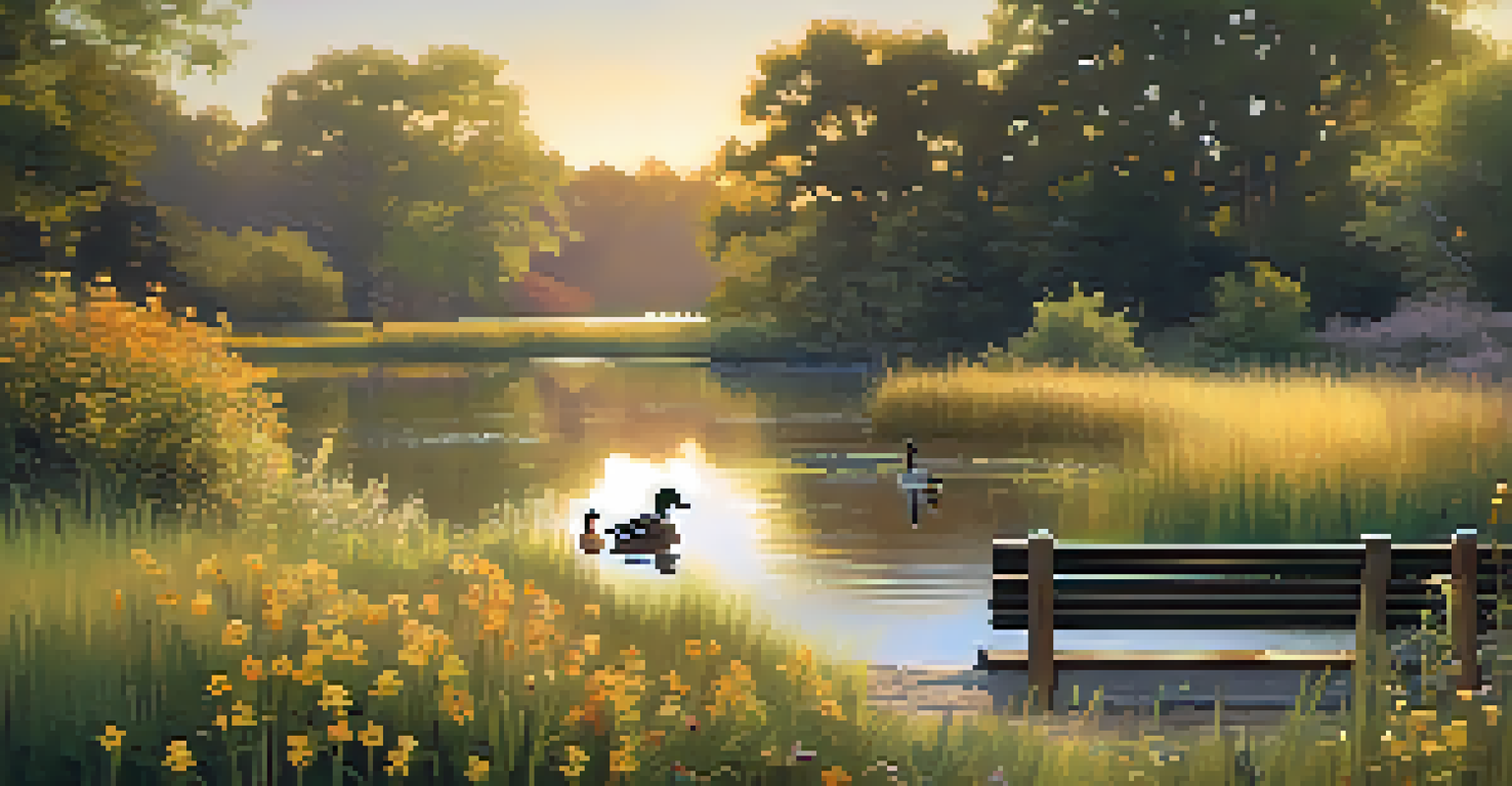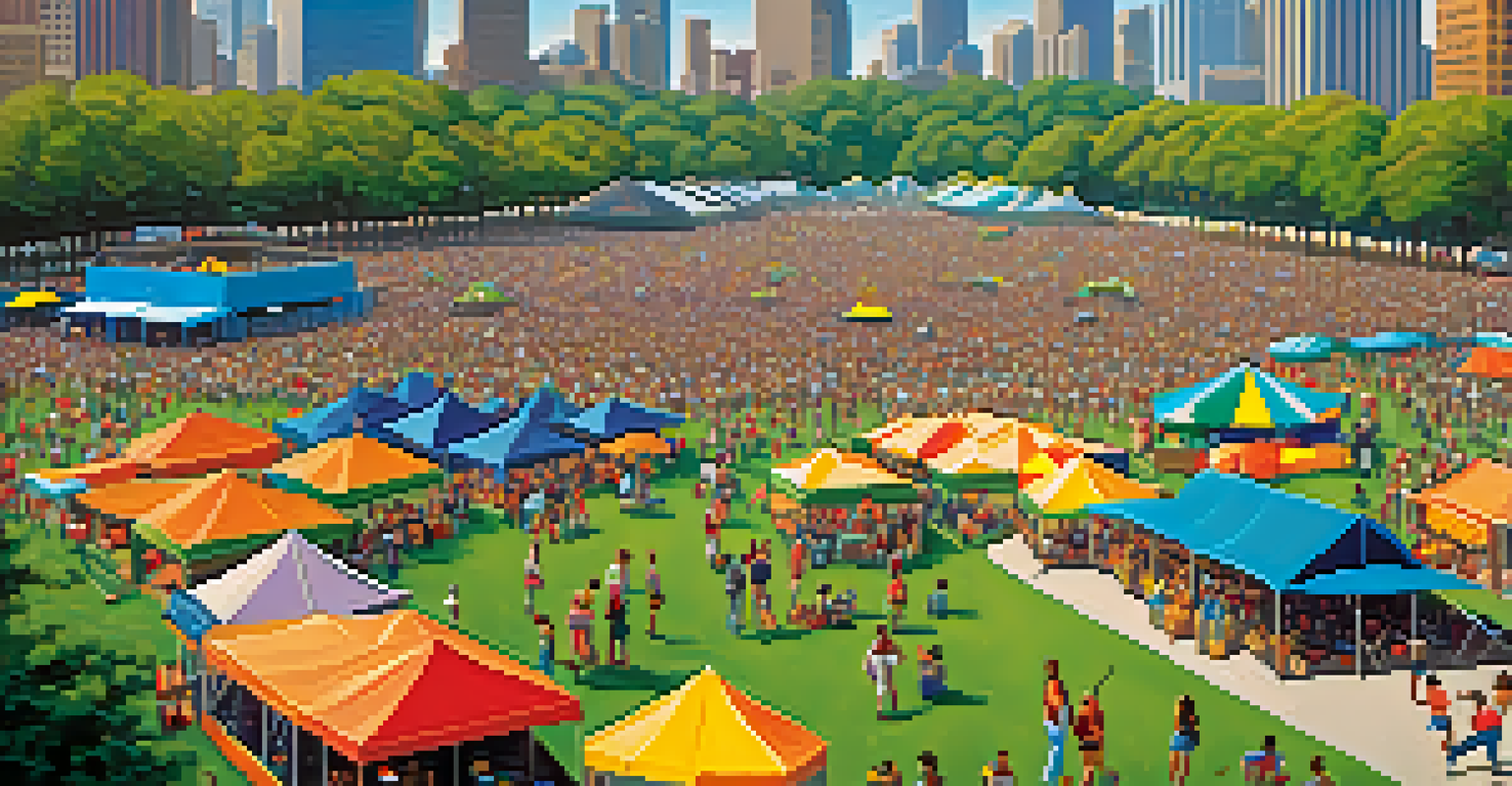Exploring Chicago's Urban Parks and Their Ecological Significance

The Importance of Urban Parks in Cities
Urban parks play a crucial role in enhancing the quality of life in cities. They serve as green lungs, providing fresh air and a space for residents to relax and connect with nature. In a bustling city like Chicago, these parks offer a refreshing escape from the concrete jungle.
Parks are not just a part of the city; they are the heartbeat of the community.
Moreover, parks contribute to biodiversity by providing habitats for various species, from birds to insects. This ecological diversity not only enriches the environment but also promotes a balanced ecosystem, which is vital for urban sustainability. For example, the presence of native plants in parks can attract local wildlife, creating a vibrant urban ecosystem.
Additionally, urban parks help mitigate the urban heat island effect, where city areas become significantly warmer than their rural surroundings. By incorporating trees and greenery, parks can lower temperatures, making the city more comfortable during hot summer months.
Iconic Parks: Millennium Park and Grant Park
Millennium Park is perhaps one of Chicago's most iconic urban parks. It features stunning art installations, such as the famous Cloud Gate sculpture, and hosts numerous cultural events throughout the year. This park not only serves as a recreational space but also as a cultural hub, attracting millions of visitors annually.

Grant Park, often referred to as 'Chicago's Front Yard,' is another vital green space in the city. Spanning over 300 acres, it hosts major events like the Chicago Blues Festival and the Lollapalooza music festival. This park is a testament to how urban parks can serve as community gathering spots, fostering social connections.
Urban Parks Enhance City Life
Urban parks provide green spaces that improve air quality, promote biodiversity, and offer residents a place to relax and connect with nature.
Both parks exemplify how green spaces can integrate art, culture, and nature. They provide residents and tourists with unique experiences that highlight the city's rich cultural tapestry while promoting ecological awareness.
Biodiversity in Chicago's Urban Parks
Chicago's urban parks are home to a diverse range of plant and animal species, making them essential for biodiversity. Parks like Lincoln Park and Humboldt Park host various ecosystems, from wetlands to woodlands, each supporting unique wildlife. This diversity not only enriches the urban landscape but also enhances the resilience of these ecosystems.
The best way to predict the future is to create it.
The presence of diverse plant species in parks can attract different pollinators, such as bees and butterflies, which are crucial for maintaining healthy ecosystems. For instance, native wildflowers found in these parks support local pollinator populations, contributing to a thriving urban ecosystem.
Moreover, urban parks act as vital corridors for wildlife movement. They connect fragmented habitats, allowing animals to migrate and find resources necessary for their survival. This connectivity is particularly important in urban areas where natural habitats are often disrupted.
Community Engagement and Urban Parks
Urban parks serve as vital spaces for community engagement and social interaction. They provide a venue for events, recreational activities, and gatherings, fostering a sense of community among residents. Parks often become the heart of neighborhoods, where people come together to enjoy nature and each other's company.
Programs like park clean-ups, community gardens, and educational workshops help residents connect with their local environment. These initiatives not only beautify the parks but also instill a sense of ownership and responsibility among community members. For instance, community gardening projects can strengthen bonds while promoting environmental stewardship.
Community Engagement is Vital
Parks serve as community hubs where residents can participate in events and programs, fostering social connections and a sense of ownership.
Furthermore, these parks often host events that celebrate local cultures and traditions. This not only enriches the community’s cultural landscape but also encourages inclusivity and diversity, making urban parks vital for social cohesion.
Challenges Facing Urban Parks in Chicago
Despite their importance, urban parks in Chicago face several challenges, including funding cuts and maintenance issues. Many parks struggle with limited resources, which can affect their upkeep and the quality of services provided. This lack of funding can lead to neglected green spaces, diminishing their ecological and recreational value.
Additionally, urban parks are often under pressure from development and urbanization. As cities expand, green spaces can be sacrificed for new buildings and infrastructure. This encroachment can threaten the biodiversity and ecosystems that parks are meant to protect.
Climate change also poses a significant challenge to urban parks. Extreme weather events, such as heavy rainfall and heatwaves, can impact the health of park ecosystems. Ensuring that these parks remain resilient in the face of climate change is crucial for their long-term sustainability.
The Role of Technology in Park Management
Technology plays an increasingly important role in the management and enhancement of urban parks. From smart irrigation systems that conserve water to apps that help residents find park events, technology is transforming how we interact with these spaces. For example, sensors can monitor soil moisture levels, ensuring that plants receive the right amount of water.
Moreover, geospatial technology allows for better planning and maintenance of park facilities. This technology can help park managers identify areas that need improvement or restoration, ensuring that parks remain vibrant and accessible. It also aids in tracking biodiversity within parks, providing valuable data for conservation efforts.
Challenges Threaten Park Sustainability
Urban parks face challenges such as funding cuts, urban development pressures, and climate change, which jeopardize their ecological and recreational value.
Community engagement can also be enhanced through technology, with online platforms allowing residents to voice their opinions and suggestions about park use. This two-way communication fosters a strong connection between the community and park management, promoting collaborative efforts in park upkeep.
Future Directions for Chicago's Urban Parks
The future of Chicago's urban parks lies in embracing sustainability and innovation. As cities continue to evolve, integrating green infrastructure into urban planning will be essential. This includes incorporating more native plants, creating wildlife corridors, and enhancing existing park features to support biodiversity.
Moreover, fostering community involvement will be key to ensuring the longevity of urban parks. By encouraging local residents to participate in park maintenance and programming, cities can create a sense of pride and ownership. Initiatives like volunteer days and educational workshops can empower communities to take an active role in their parks.

Finally, collaboration between city officials, environmental organizations, and community groups will be crucial for the future of urban parks. By working together to address challenges and implement innovative solutions, we can ensure that Chicago's parks remain valuable ecological and social resources for generations to come.